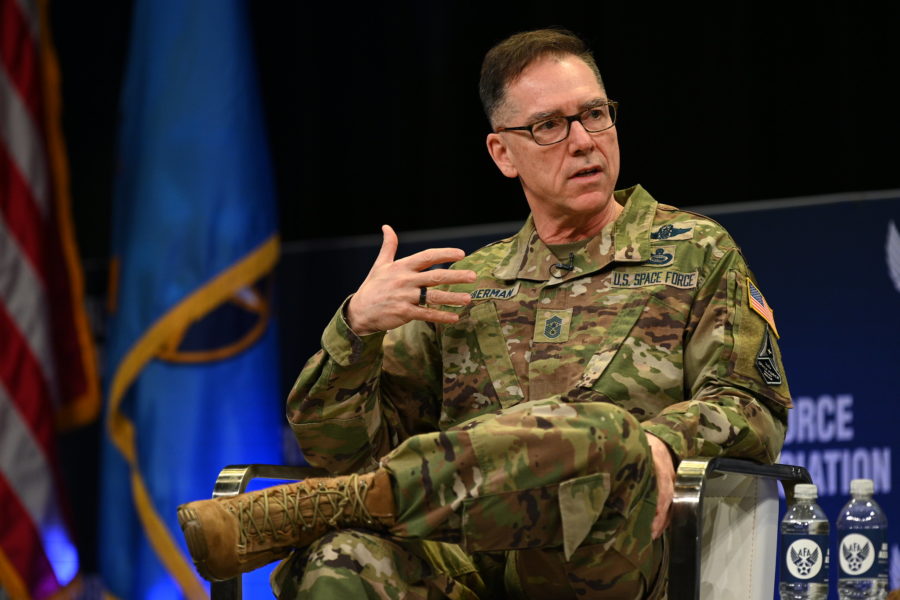Top leaders in the Space Force enthusiastically reviewed their experiences wearing continuous health monitors that could form the basis for the service to do away with conventional PT testing.
They said in press briefings at the AFA Warfare Symposium on March 4 that the black health monitoring rings that quite a few Guardians wore were part of a pilot program that’s helping the service flesh out its “holistic wellness” concept. The wellness program won’t rely on annual PT tests anymore but instead monitor the troops’ health all year round. Several senior Air Force leaders also were seen wearing the rings, but an Air Force spokeswomen said she could not confirm if the Air Force also is considering replacing its regular PT program.
The Space Force leaders want the program to ultimately amount to “more than just a physical training test like I grew up doing in the Air Force, where we ran and did sit-ups and pushups,” said Brig. Gen. Shawn N. Bratton, commander of Space Training and Readiness Command. STARCOM is one of the Space Force’s three field commands, generally equated to an Air Force major command.
Bratton, STARCOM senior enlisted leader Chief Master Sgt. James P. Seballes, Chief of Space Operations Gen. John W. “Jay” Raymond, and Chief Master Sergeant of the Space Force Roger A. Towberman all wore the rings.
“We think there’s something that this data provides,” said Bratton. “We’re trying to figure out, how do we aggregate that? How do we think about that? If a Guardian is conducting fitness activities throughout the week and meeting certain milestones, maybe we don’t need to do a test on [an] annual basis if they’re meeting a standard and we can keep track of that through the ring.”
Bratton expected the planning to take another year or two.
The ring’s sleep monitoring feature seemed to have made the biggest impression on all the leaders.
“It makes you very conscious if you get enough sleep, and not even if you just got enough sleep, but if you got quality sleep,” Seballes said. “If you’ve ever woken up before your alarm clock when you’re just laying there with your eyes closed, it knows the difference. If you’ve met your mark, it gives you a little crown in the morning.
Continuous assessment is one of three prongs to the service’s approach, said Towberman, a self-described “gear weirdo.” Other aspects include fitness; and culture and education.
A Guardian’s wellness may be designated green, amber, or red “so that the chain of command and the Guardian know where they’re sitting all the time with regard to readiness,” Towberman said.
Raymond found the sleep monitoring most gratifying:
“It made me much more aware of my sleep, and how much I was sleeping, and the patterns of sleep,” Raymond said. “I’m getting personal here, but if I ate a late dinner, I didn’t sleep as well, because my heart rate didn’t go down as fast at night.”
Towberman perceived a wider benefit, that of cohesiveness—“a thing that binds us. And it’s impossible not to start gamifying,” he said.
Referring to Raymond: “I’ll say, sir, what was your sleep score last night? And he wants to know mine,” Towberman said.
“So we’re building this community, this culture, of fitness where in a fun way people just immediately start taking care of each other. They’re connected.”
